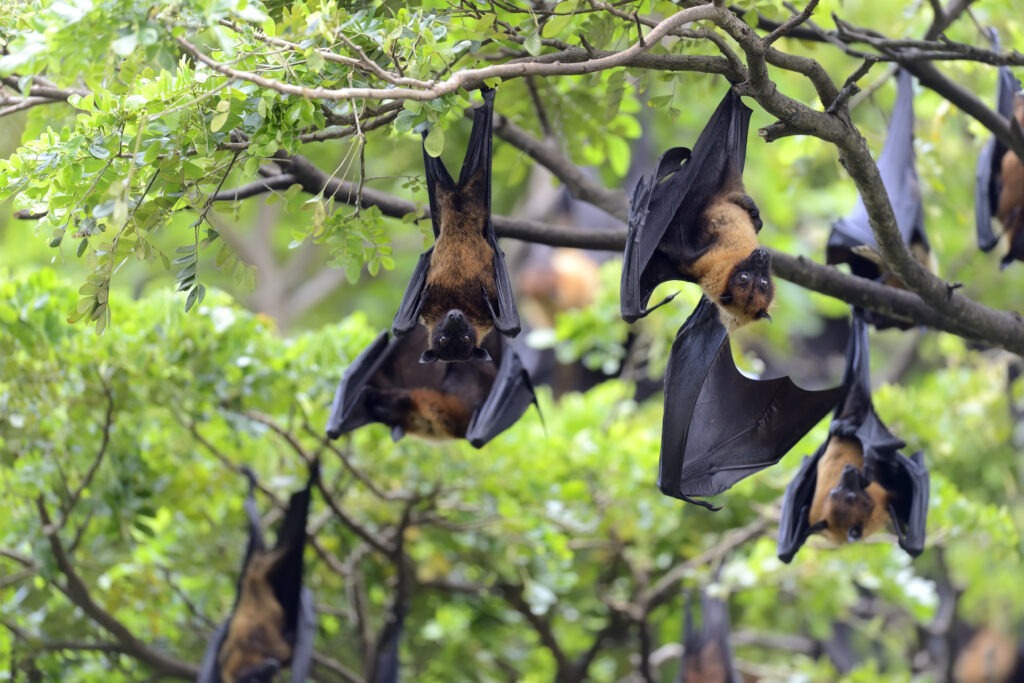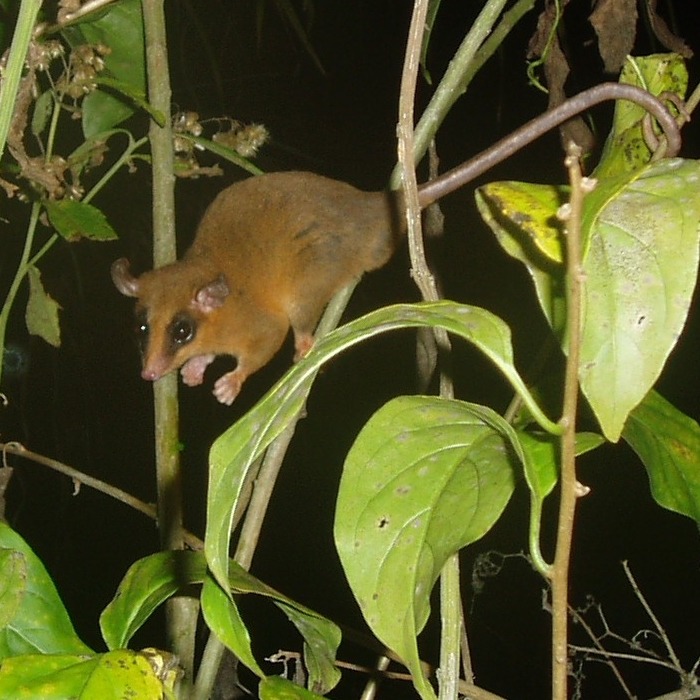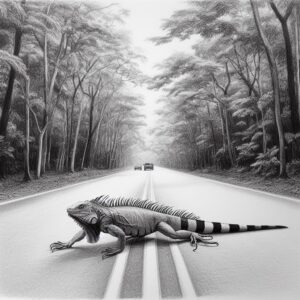Month's Subject: The Nightshift
Nighty birds
At night a different set of animals become active. Nocturnal activity requires a very different set of senses that diurnal activity. nocturnal animals may have large, light-sensitive eyes, an acute sense of hearing, smell or touch or heat sensors. Some use echolocation to orient themselves and others have developed means to avoid detection by echolocation.
Owls, night jars and potoos all have large eyes and reflecting tissue behind their light receptors to be able to see at night. Most have acute hearing to find their prey and a feather structure that allows them to fly silently and avoid detection by prey (or predator). Mice forage on the forest floor using their large eyes and whiskers. Armadillos use their keen sense of hearing to find their prey at night. Snakes hunt small mammals using their heat sensors to find them.

Bats
Bats are possibly the most succesful and most varied group of nocturnal animals. They fly at night and find their way using echolocation. THere are over a hundred species of bat in Panama and they have a large variety of survival strategies. Some hunt for flying insects, others search for insects crawling on leaves, or centipedes and large insects living in the eaf litter. There are two species of bat that catch fish, bats that feed on other bats and small birds, bats that feed on fruit and bats that feed on nectar. Some bats hunt frogs and locate them by the frogs own mating call.
And three species of bat, feared and vilified by almost everyone, feed on the blood of vertebrates. Two of these vampire bats feed mostly on birds, bu the third, most common species, feeds on the blood of mammals. The last one, aptly named the common vampire bat (Desmotus rotundus) has become quite common. The common vampire bat now mostly feeds on cattle and horses, which are common and widespread. Vampire bats live in colonies and frequently move from one colony to the next. Vampire bats develop social bonds with several other bats, some relatives, but also to unrelated individuals through mutual grooming and food sharing. The latter is very important because vampire bats can live only three days without food and rely on their friends for food when they fail to get a meal.

Prompt List
To be completed…






